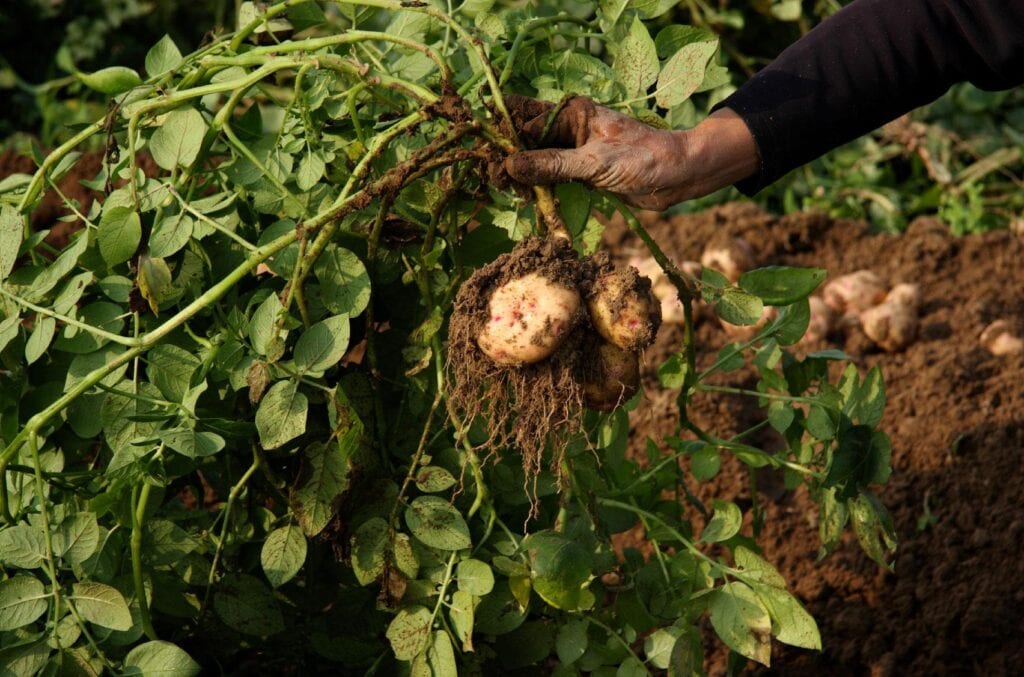We are awaiting the publication of the new strategy document to map a path for the Irish agricultural industry as it heads towards 2030. While it is still in development, one area that will be a top priority is the need for all sectors to reduce the carbon footprint of their production systems.
In the broadest terms, reducing carbon footprint means reducing energy use, diesel use and fertiliser use. What can we do in the potato sector to achieve these aims? In the current production system there is some room to reduce Nitrogen fertiliser use, but not much. The loss of the Diquat herbicide is focusing attention on this anyway, and it’s something that needs to be looked at carefully.
There is also room to incorporate organic manures into production systems, but it’s not a very easy transition. Organic manures are variable by nature and are ‘slow release’ at the best of times, but soils that receive frequent applications of organic manures over the rotation are generally very good soils in which to grow potatoes using lower levels of chemical fertiliser rates.
Diesel use
There is also some scope to reduce diesel use. It could be argued that tractor horsepower and machinery weight is on an ever increasing trajectory. At some stage this will have to halt to protect the soils we rely on for a living. More horsepower and more weight means higher diesel usage. Again, carbon footprint reductions on this front will be modest.
![PHOTO-2019-10-08-13-22-05[1033] - BE PROFY IN POTATOES NEWS](https://potatoes.news/wp-content/uploads/2020/11/PHOTO-2019-10-08-13-22-051033-1024x576.jpg)
However, it’s when the potatoes are in the yard and placed into storage that huge gains can be made in energy use. We have got ourselves in a position where one variety, harvested over a two-month period, supplies practically the entire ware market for 12 months of the year.
So for 10 months of the year, the bulk of the ware potato crop has to be stored in refrigerators to suppress sprouting and, more importantly, to control skin blemishes. In a mild climate like ours this can be difficult. Over a warm summer, with potatoes stored until August, it’s a huge consumer of energy, so maybe we need to look at how we supply potatoes. No other crop has such a dependence on one variety as the ware potato sector. Growers of carrots, cabbage, cauliflowers, processing potatoes all have a range of varieties to choose from for their prevailing conditions. They can pick or drop varieties as they deem suitable for their requirements.
Reduced energy costs
Why can’t we market a brand of potatoes, not on the basis of variety, but on the basis of quality and the reduced energy that goes into their supply? We can have varieties that are very early maturing, second early, main crop and very late main crop all marketed under the one brand. Early and second early could be sold ex-field with no storage from June until September/ October.
Main crop varieties would pick up the mantle until February/March and require little or no refrigeration. After this, the very late maturing varieties could be marketed until the following June. Late maturing varieties have long dormancy periods. Long dormancy characteristics require less refrigeration. So a brand could be marketed throughout the year on the basis of requiring less energy over the year.
Variety selection
This approach would require a complete change to the variety selection currently available. Varieties from each maturity would have a general similarity of look and taste.

A white-skinned, white-fleshed round shape potato would be the easiest common denominator, so the consumer would need guidance on this. Diseases like silver scurf and blackleg can trip up the best varieties that are ambient stored, so varieties would have to be chosen that aren’t prone to these diseases.
Luckily, Teagasc is heavily involved in potato breeding, so designing a range of suitable varieties is not insurmountable. With 80pc of the potatoes in Ireland being marketed through four or five retail chains, which in turn are supplied by four or five intermediaries, it can’t be that difficult to organise and manage a supply chain of varieties.
There is an opportunity here to re-imagine an industry to make it sustainable in the broadest sense of the word, from an environmental, social and economic perspective. It’s an opportunity worth investigating.

